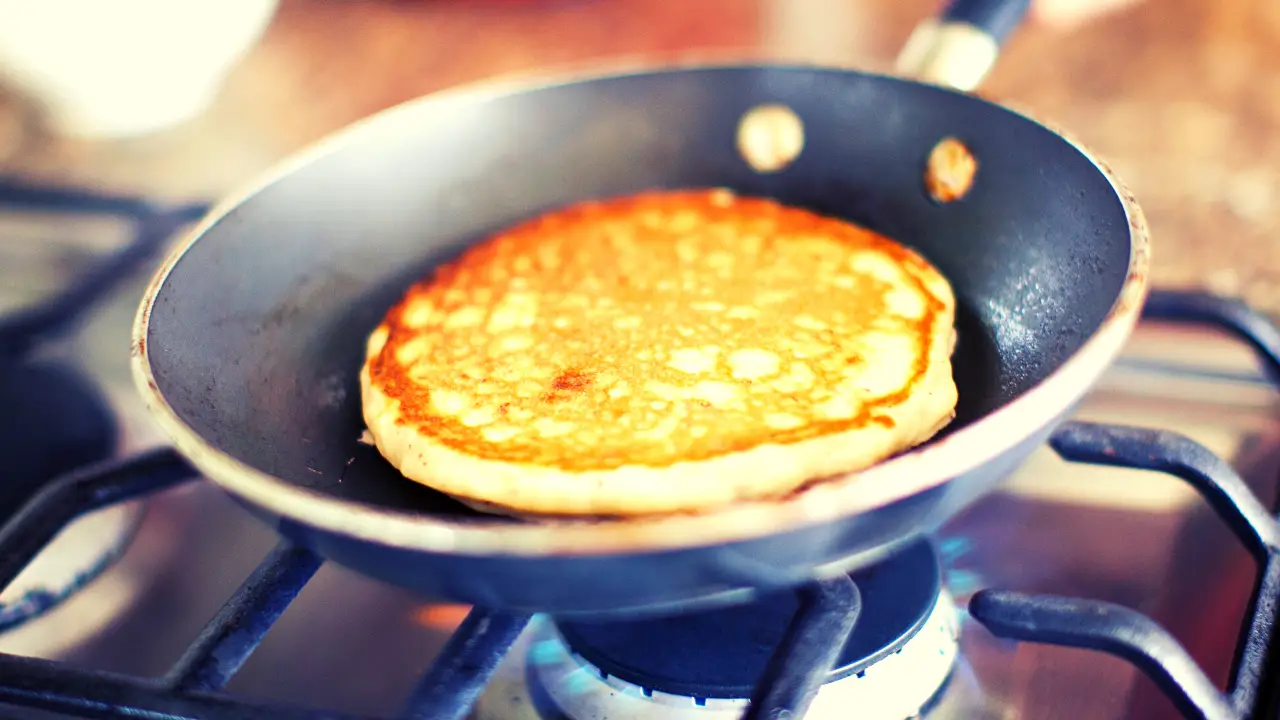If you’re in a bind and need to make pancakes but don’t have any flour, don’t worry. There are a few substitutes for flour you can use that won’t affect the taste or texture of your pancakes too much or, perhaps, make them even better.
1. Any Alternative Flour Option
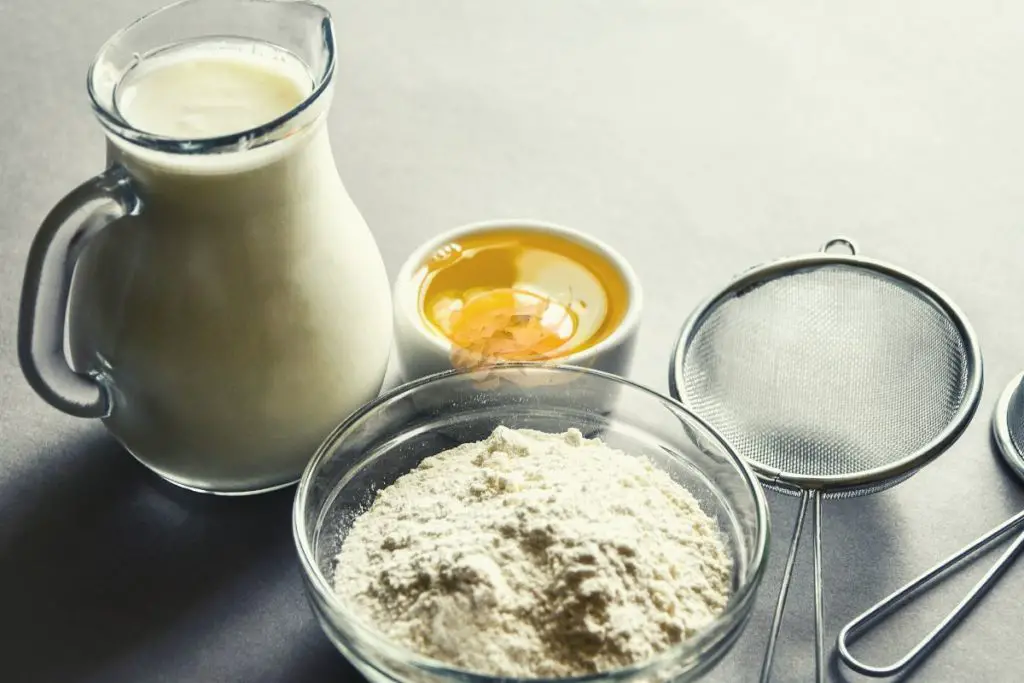
If you don’t have all-purpose flour, rest assured—any alternative type of flour you have at home can be the key to a delicious pancake just as good as the ones you are used to.
Whole wheat flour is an excellent option for a pancake that is virtually identical to the traditional type but healthier—it is denser and richer in fiber, with a slightly grittier texture.
When it comes to gluten-free alternatives, oat flour stands out since it has a neutral flavor akin to plain flour and has a 1:1 substitution rate. Just keep in mind that the pancake can be a bit crumblier than you’re used to, so you’ll benefit from including eggs.
For those on a keto diet, coconut flour poses a valuable option that adds a dash of refreshing, tropical flavor. However, it is worth noting that coconut flour absorbs liquid more readily, so you’ll need to replace each cup of plain flour with merely ¼ cup of coconut flour.
So, if you’re looking for gluten-free, healthy alternatives to regular wheat flour to make pancakes, below are some of my favorite options.
- Almond Flour (check out the best fluffy almond flour pancakes recipe here).
- Sorghum Flour
- Buckwheat Flour
- Arrowroot Flour
- Amaranth Flour
- Tapioca Flour
- Coconut Flour
- Brown Rice Flour
- Chickpea Flour
- Oat Flour
- Corn Flour
Other alternative flour options are those made from cassava and even quinoa.
However, it’s important to remember that texture and flavor will vary vastly between options, and the substitution rate may not always be an even 1:1. Luckily, it is easy to adjust the pancake mix for the right consistency, so add the ingredients as needed.
2. Cornmeal
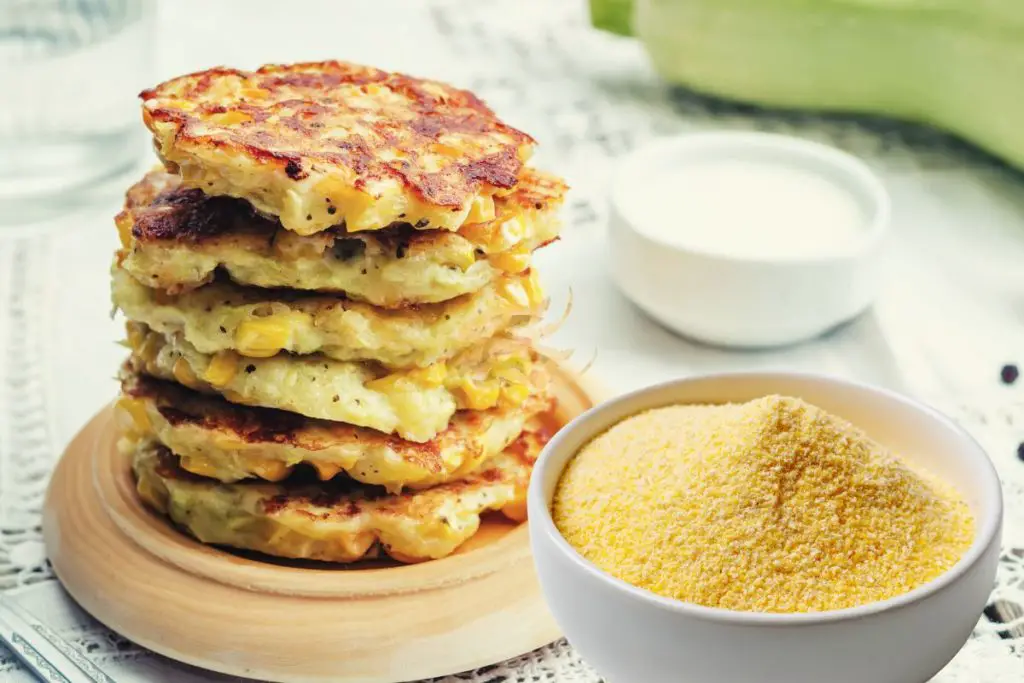
Although traditional cornmeal pancake recipes commonly require a dash of all-purpose flour, it is not an absolute requirement. With a bit of creativity, a plain cornmeal pancake can be a delicious gluten-free option.
If you try to make cornmeal pancakes at home without any other type of flour, the result may be similar to that of johnnycakes. Keep in mind that the result will not be as fluffy or light as traditional pancakes, and the cornmeal has a maize flavor that will be noticeable.
Also, cornmeal has a coarser, bit gritty texture, so if you don’t like that, then you can use corn flour instead, which is finer and smoother.
However, there is a way to get fluffier cornmeal pancakes with eggs. If you separate the egg whites from the yolks and beat the egg whites until they’re stiff, they can make your batter airier and softer. Once done, slowly fold the egg whites with the egg yolks and the rest of the mixture.
The result will be delicious pancakes that, while not exactly similar to the traditional ones, is just as good.
3. Rolled Oats
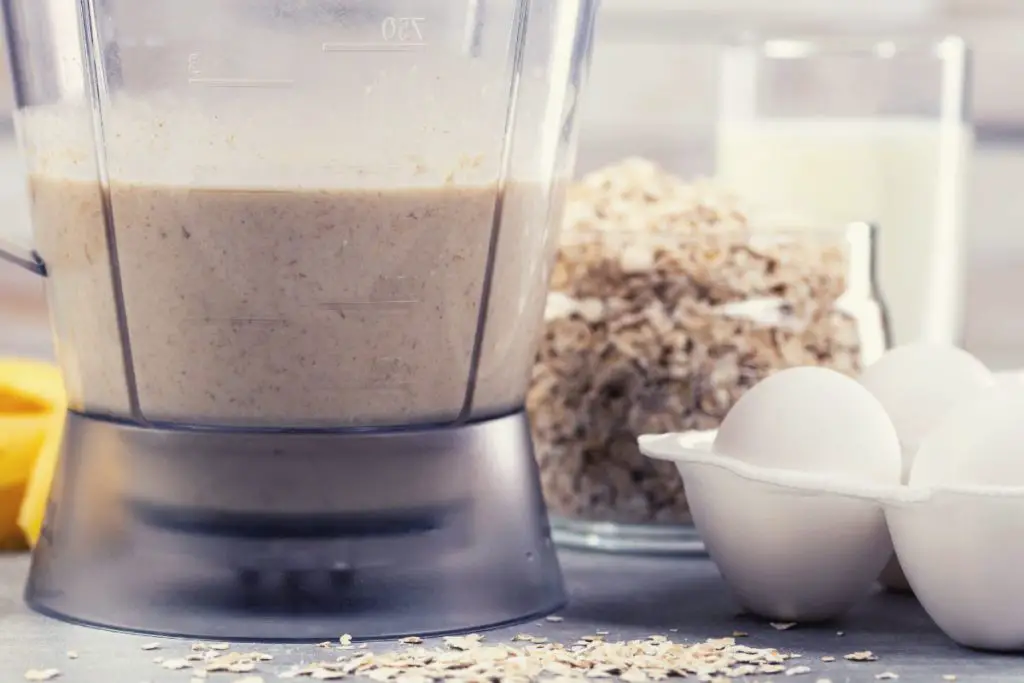
If you have rolled oats at home, you can prepare delicious and nutritious pancakes in a matter of minutes. It will be a healthier alternative too, as it is richer in protein and fiber while being a low-carb and gluten-free option for those following strict diets.
The key is to blend the mixture really well—all you need is a blender or food processor and blend until you get a smooth batter.
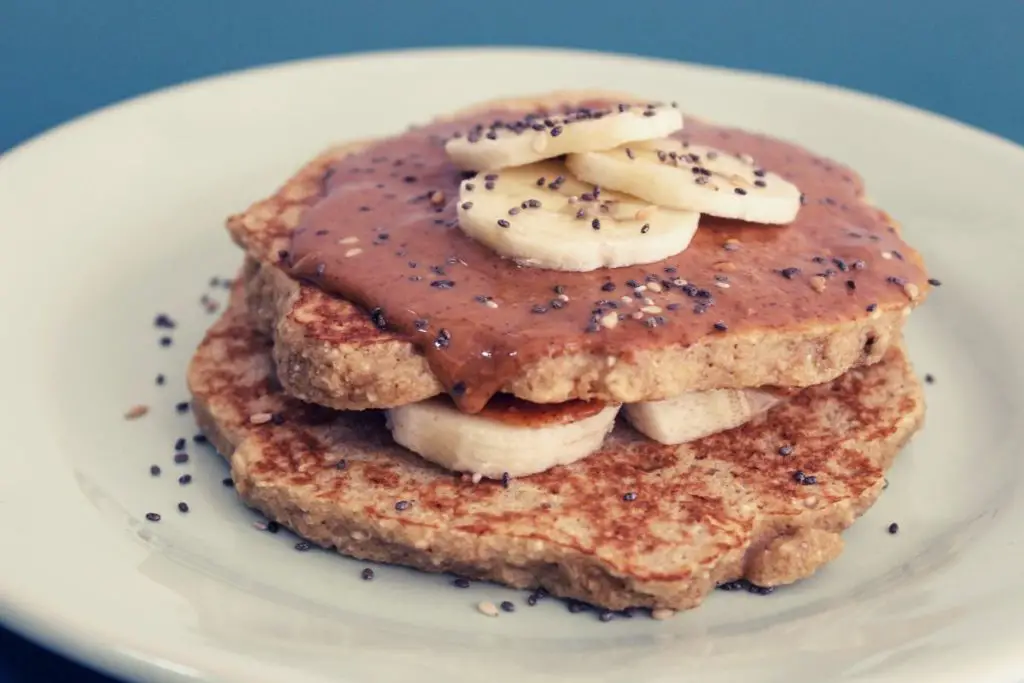
The only difference to consider when using oats is that the substitution ratio between the oats and the wheat flour is not perfect. It depends on your particular recipe, but a general rule is to assume you’ll need 1-1/3 cups of oats per single cup of all-purpose.
Another option is to make pancakes with the rolled oats as they are, with no blending of the batter required. The texture and flavor will be denser and less smooth than regular pancakes, but the taste will be exquisite.
4. Whey Protein
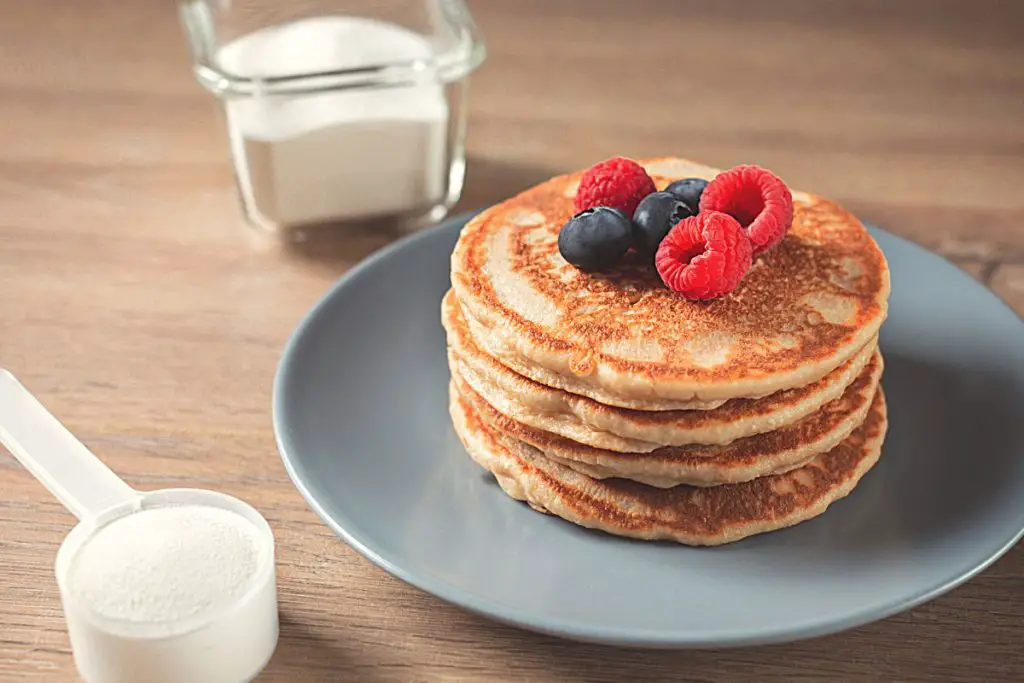
Using whey protein for your pancakes is an easy way to get a delicious breakfast high in protein, low in carbohydrates, keto-friendly, and gluten-free.
Although you could use any type of whey protein available, you will get the best results from unflavored and unsweetened powders. They are versatile and perfectly neutral, so your pancakes will taste as close to the traditional ones as possible.
However, don’t be discouraged if you have flavored whey protein, as they work just as well.
If you are vegan, try any of these plant protein powders here.
Pancake recipes using whey protein can be minimalistic and will often require only the powder, eggs, milk, and baking powder. However, you can also make them as complex as you want and include cinnamon, syrup, oats, bananas, or any additional flavoring you consider.
Pancakes made with whey protein are slightly chewy and relatively thick, but it’s easy to adjust the proportions to something you are comfortable with.
Check Out These Easy And Healthy Protein Pancake Recipes.
5. Sprouted Barley
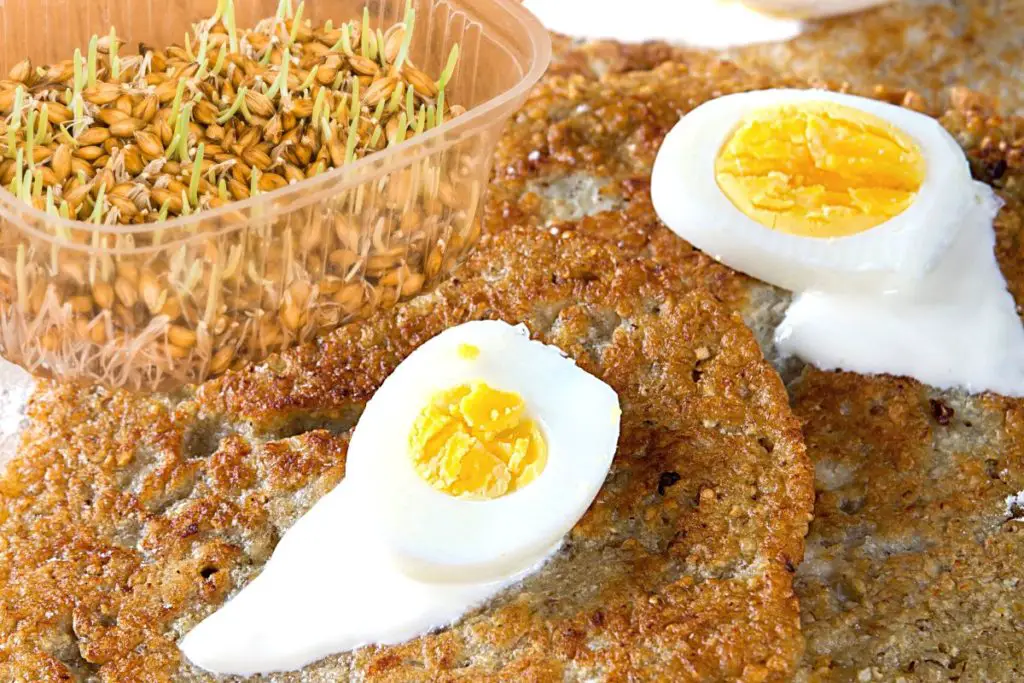
Soaked and sprouted grains are an excellent and nutritious alternative worth incorporating into your breakfast and daily meals. Not only are they a rich source of fiber, but their nutritional value remains almost untouched compared to highly processed flours.
Granted, making pancakes with sprouted barley is not instantaneous and requires quite a bit of preparation—namely, preparing the barley—a few days ahead.
However, once that step is accounted for, the actual cooking is done fast and easy, and the results are worth it.
The pancakes are not fluffy and are somewhat flat, but they are incredibly flavorful and boast a wholegrain nutty taste that is utterly enjoyable.
Usually, the ingredient list is not too different from a regular pancake—milk, eggs, and oil if needed. Match with maple syrup or honey, or for a savory and filling breakfast, top it with an egg and some sour cream.
6. Bananas

Many pancake recipes call for the inclusion of bananas, as their creamy texture and naturally sweet flavor are a match made in heaven for baking enthusiasts.
However, what if I told you that you could enjoy a perfect morning pancake made with just three ingredients, thanks to bananas? This is possible because bananas are the ideal replacement for both flour and sweeteners, so you won’t need any other ingredients.
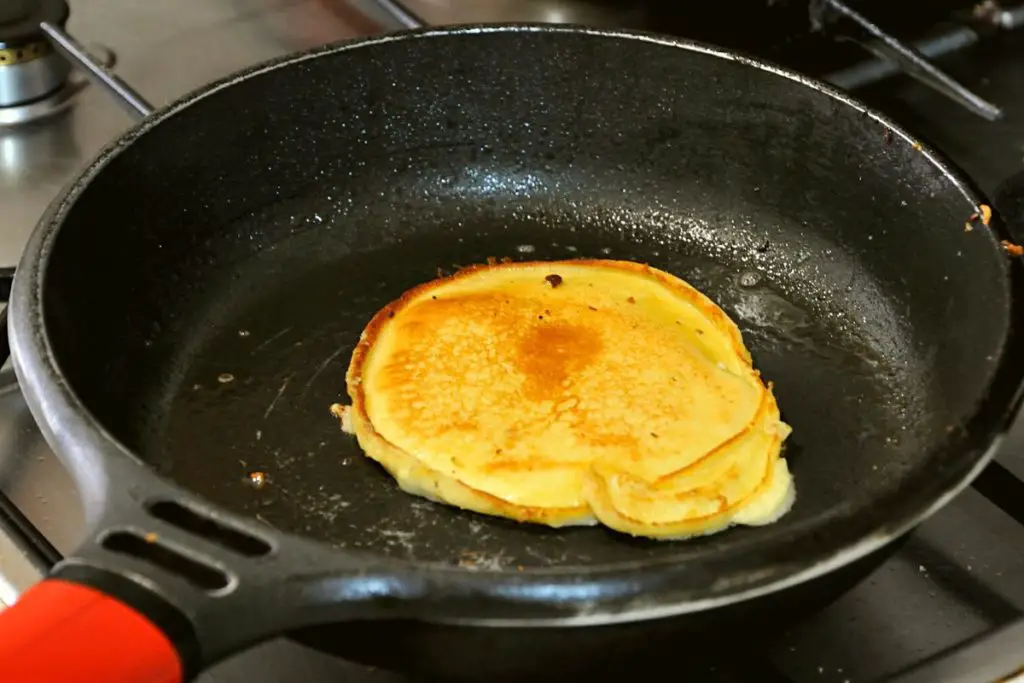
All you need are ripe, almost brown bananas—with plenty of black spots in the peel—since that is when they are at their sweetest. Mash them together until pureed, then incorporate eggs and mix until smooth. You can add a dash of vanilla or a teaspoon of cinnamon for additional flavor.
Since it lacks flour, the texture will be much denser. However, the flavor remains soft and sweet.
Related Article: 17 Best Egg Substitutes For Delicious And Nutritious Pancakes.
In Conclusion
As you can see, you can make pancakes with flour. There are many good substitutes for flour in pancakes; some affect the taste and texture of pancakes more than others.
You can find the perfect substitute for your pancakes with a little trial and error. Whether you’re looking for a gluten-free option or just want to switch things up, there’s a flour substitute that’s right for you.
